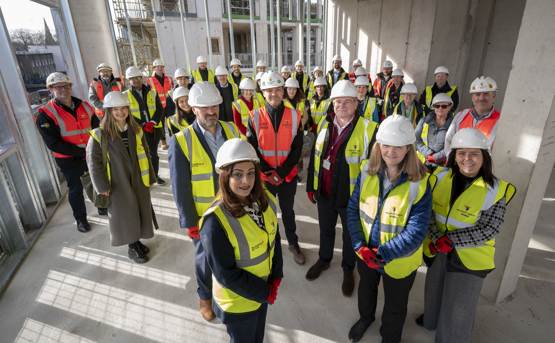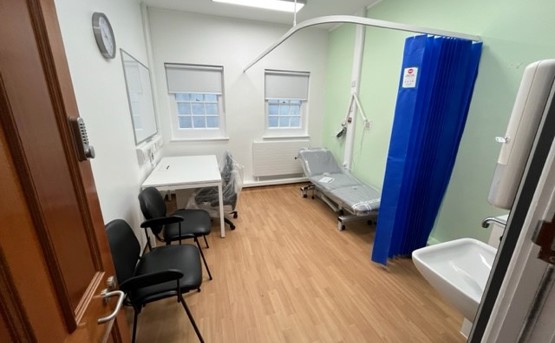
Published date: 18 October 2021
How NHSPS is creating a healthy estate
Adrian Powell, our Development and Planning Director, speaks to RICS Property Journal about how sustainability, wellbeing and modern methods of construction are shaping the future of the NHS estate.
The article was originally published in RICS Property Journal here.
Our ways of working at NHS Property Services (NHSPS) and the use of space in our buildings across the health estate, have changed drastically over the past 18 months.
From adapting assets to support the COVID-19 vaccine rollout to exploring ways that community-based health and well-being initiatives can be run locally, we have learned lessons that will help us to improve the health estate and ensure it is fit for patients in both the short and long term.
Planning for the future
Where there is demand for additional space that cannot be met by adapting existing assets, new sites need to be developed, and the location of such hospitals and health centres is clearly important.
At NHSPS, we have the only team dedicated to town planning in the NHS; we believe that the health of a community should be a priority in the town planning process. With the collapse of many high-street chains during the pandemic, the opportunity has arisen to build new clinics, GP surgeries and health centres in prime locations.
The recent shift to integrated care, which focuses on delivering care from a local level up, also means that it is more important than ever to ensure that patients can easily access health services in their local community. Sustainability and carbon-neutrality are crucial considerations for all our activities as well, and we build using modern methods of construction (MMC), including off-site manufacture of building components where possible.
When additional space is needed on a semi-permanent basis, modular buildings are a viable option given their shorter lead and construction times. This approach is made possible by the relaxation in town planning requirements and extension of permitted development rights.
On constrained sites, we often need to move clinical operations into temporary buildings to allow the redevelopment and optimisation of existing facilities and avoid disruption to service, and modular buildings allow this. They are also useful for meeting demand for space in community health services, ensuring essential healthcare services and the patients who seek them are not affected when off-site construction is not possible.
Healthy design
As well as providing additional space and prime locations for health services, it is important to improve the health of the population in all buildings we construct, renovate and operate.
Health considerations need to be incorporated into design of new buildings at the planning stage, a process known as healthy design. Buildings with few windows and no outdoor space for instance can negatively affect the health and well-being of patients and NHS staff. Therefore, across the country, we are helping to update and adapt spaces to help address local health and social needs – for little or no cost. It can be as simple as turning a small outdoor space into an allotment, allocating kitchen space to a weekly evening cooking class or giving a charity access to unused space to run a food bank.
It is easier than people think, and there are many examples. One is at a clinic in Scunthorpe where the reception area is being reorganised and the café updated and improved, creating space and a more welcoming environment.
Meanwhile, an overgrown plot of land next to the Houghton Primary Care Centre in Tyne and Wear has been transformed into a beautiful community garden. We partnered with the nearby Sunderland Recovery College, which now oversee the garden and run courses there for people recovering from mental health problems. The local community has also started coming back to the space, helping to maintain the garden and grow food for the public.
We will strive to continue providing a modern, efficient and fit-for-purpose health estate, which will ultimately help us to achieve our goal of enabling excellent patient care. We will also look to support and expand community-based, out-of-hospital care, bringing services closer to the community.
By adapting existing spaces and ensuring that new buildings are designed with health and ease of access in mind, we can ensure that the health estate meets the needs of patients, both today and tomorrow.
Learn more about our Healthy Places programme
This year we are delivering over 300 projects which will transform the NHS estate nationwide, support Integrated Care Systems, and enable excellent patient care.
Projects range from refurbishments and new builds, to accommodating social prescribing initiatives, to estate optimisation and repurposing of vacant space.






